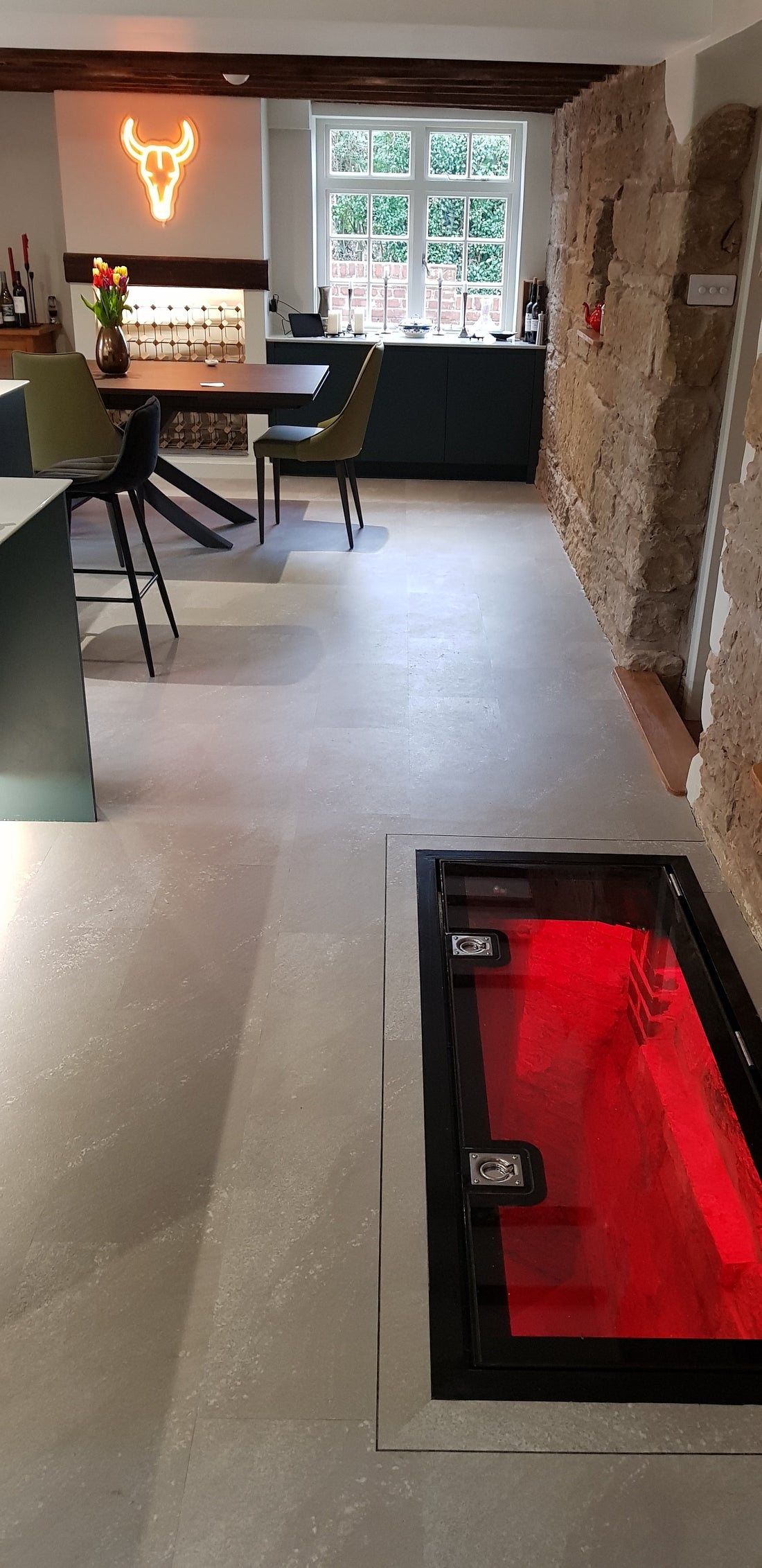
Manual vs. Electric: Which Glass Floor Door Is Right for You?
Share
Manual vs. Electric: Which Glass Floor Door Is Right for You?
Deciding on a glass floor hatch for your home is an exciting step, and one of the most common questions we're asked is whether to choose a manual or an electric system. While both options offer the same stunning aesthetic and certified safety, their key differences in cost, convenience, and functionality can significantly influence your choice.
This guide will help you compare the two systems to find the perfect solution for your home and lifestyle.
The Case for a Manual System
A manual glass floor hatch, operated by a gas strut mechanism, is the ideal choice for a straightforward, cost-effective solution. The system is designed for a quick and simple opening, with the gas struts providing an assisted lift that makes even heavy glass doors feel effortless. For homeowners who only need to access their cellar or storage space infrequently, a manual system offers all the functionality and security you need without the additional expense. Installation is also incredibly straightforward, as there is no need for cable routing or a power source.
The Case for an Electric System
For the ultimate in convenience and luxury, an electric system is the definitive choice. Operated by a quiet, remote-controlled motor, a hinged electric door provides hands-free access at the touch of a button. This is particularly beneficial for larger, heavier doors, as it completely removes the need to physically lift or lean over the opening, making access safer and more convenient. Furthermore, our electric doors come with a range of advanced safety features—such as a key override and a pinch-auto reverse system—that are not available on manual units, offering an unparalleled level of security.
Quick Comparison: Manual vs. Electric
-
Cost:
Manual: A more cost-effective and budget-friendly option.
Electric: A significantly higher initial cost due to the motorized system. -
Speed:
Manual: Faster to open for quick, in-and-out access.
Electric: Operates more slowly to ensure safety and smooth, controlled movement. -
Use Case:
Manual: Ideal for standard sizes, lighter loads, and infrequent use.
Electric: Best for larger, heavier doors, frequent use, and luxury applications. -
Safety:
Manual: A safe, secure, and lockable system.
Electric: Includes advanced safety features like auto-reverse and key override. -
Installation:
Manual: Requires no electrical work.
Electric: A simple plug-and-play system that requires access to a standard wall socket.
Conclusion: Which is Right for You?
The best choice ultimately depends on your priorities. If your focus is on a stunning visual effect and infrequent, simple access, a manual door is an excellent and budget-friendly option. If you value effortless convenience, enhanced safety for a larger door, and a premium "wow" factor, then an electric system is a worthwhile investment that will transform how you interact with your space.
